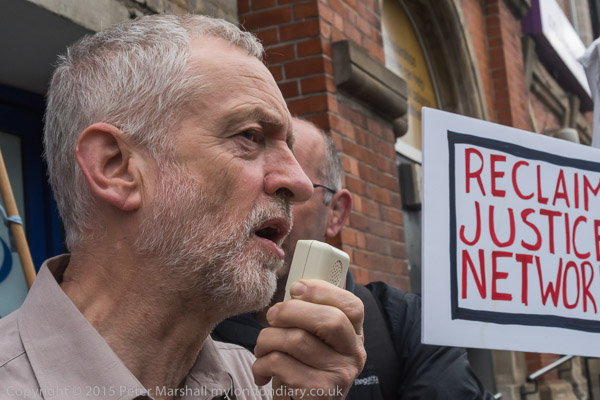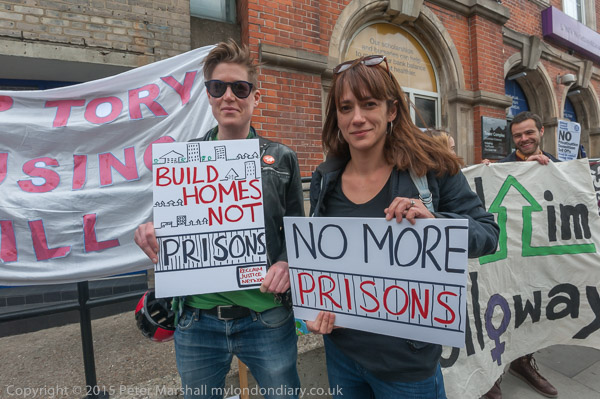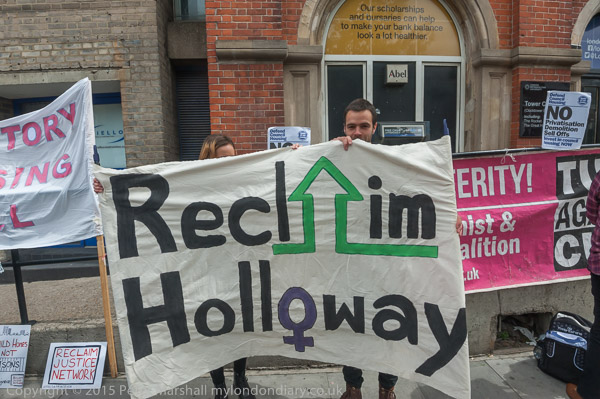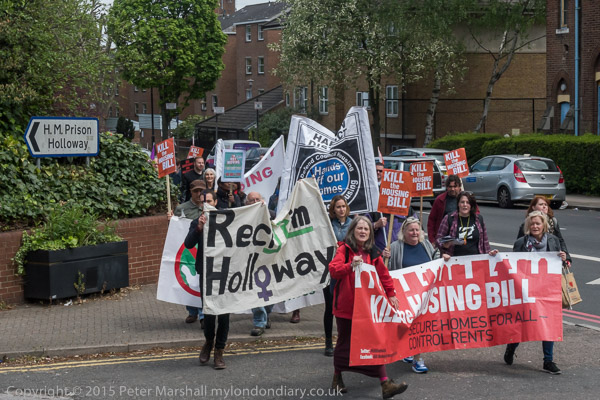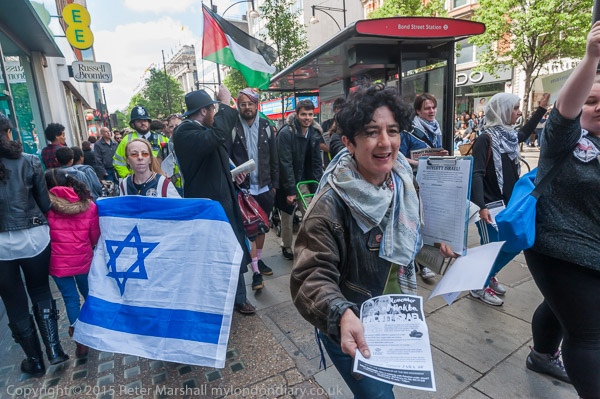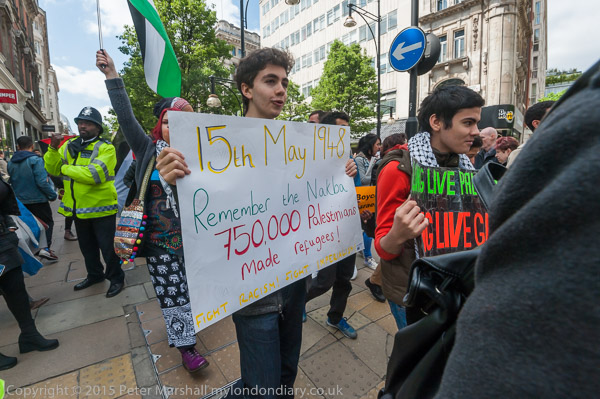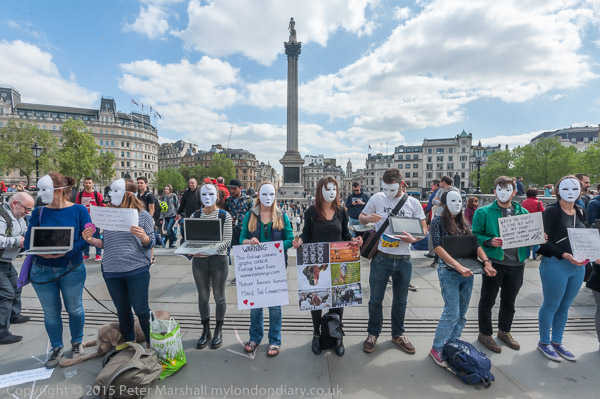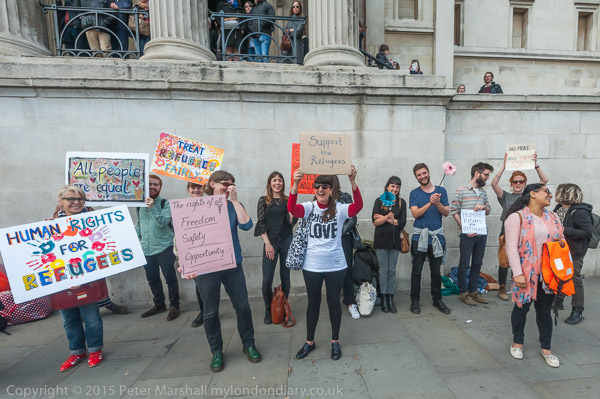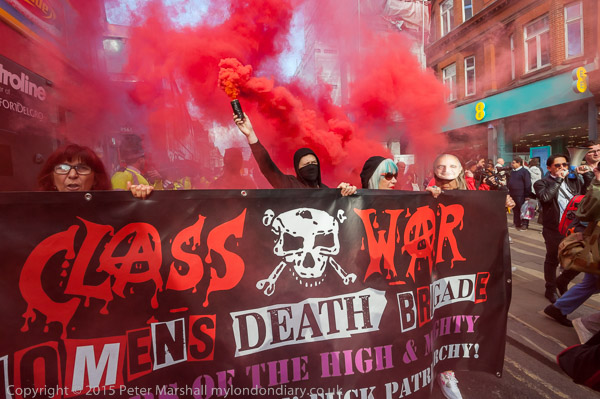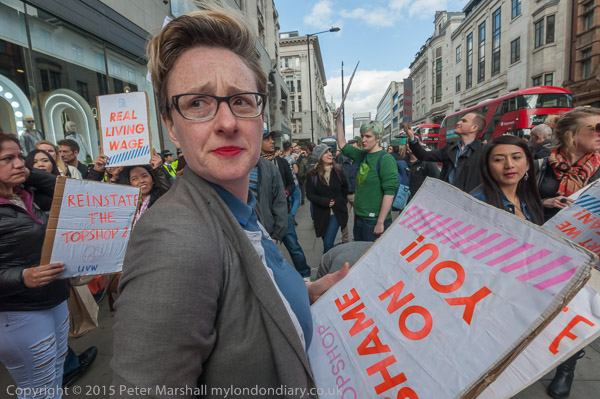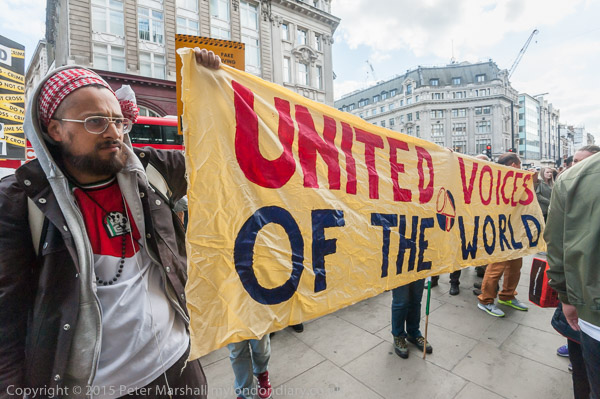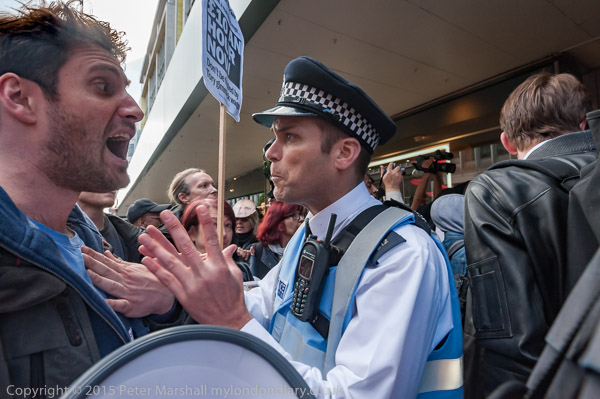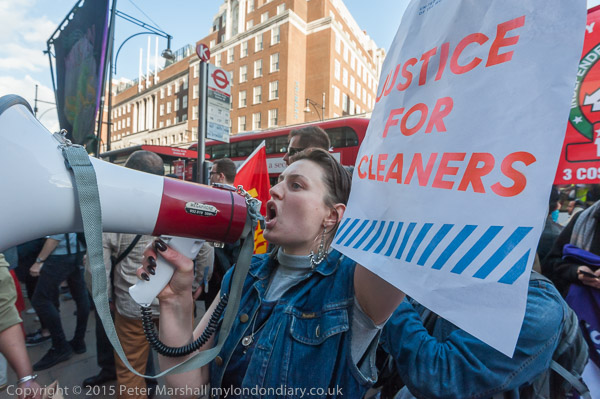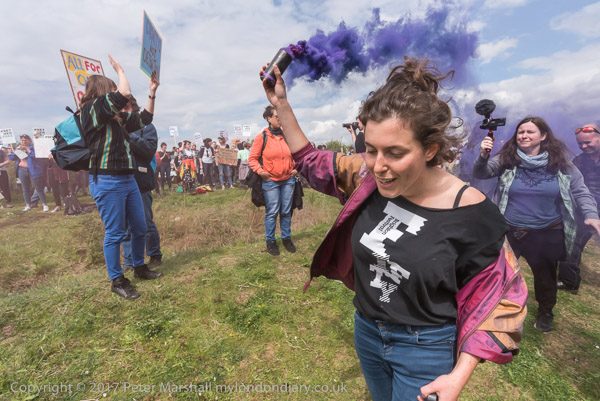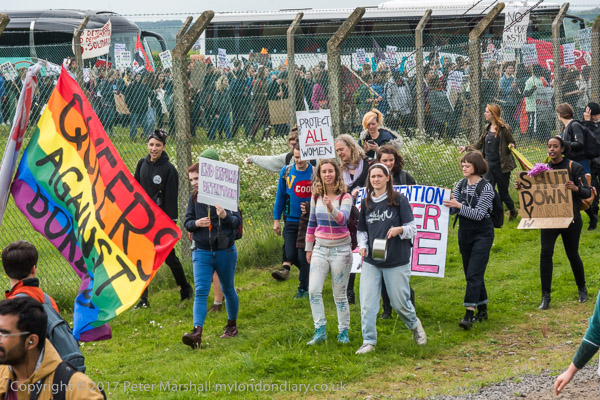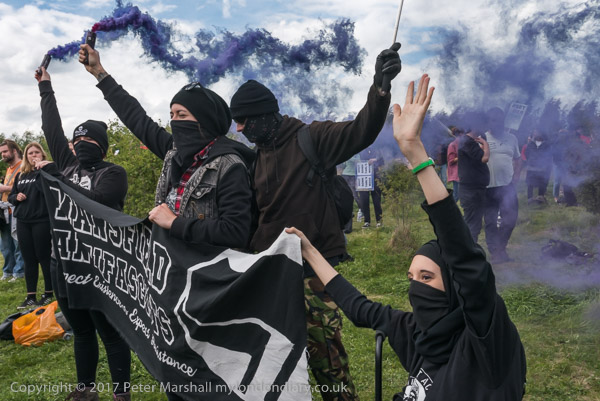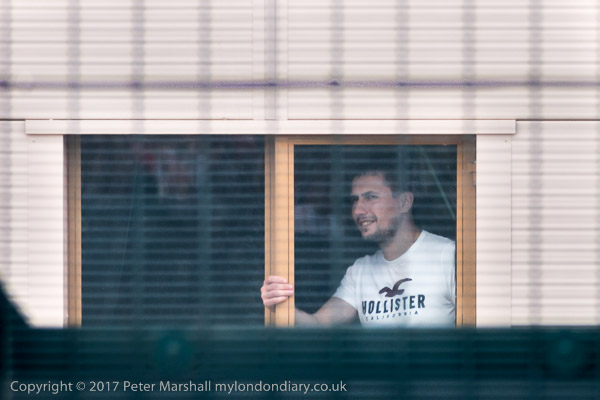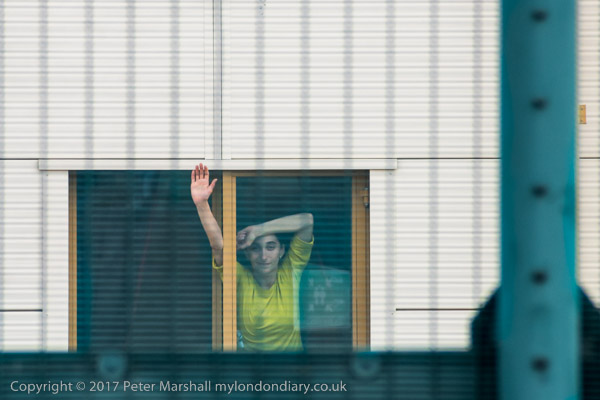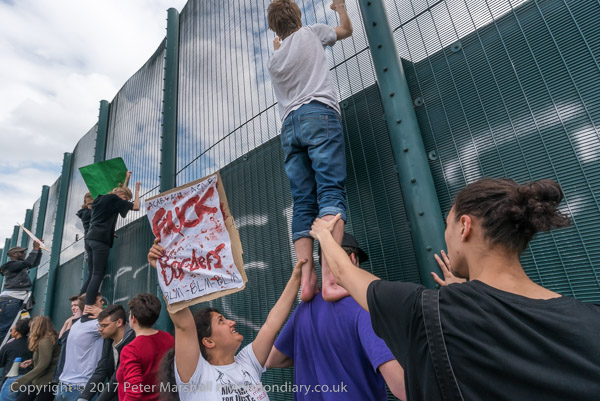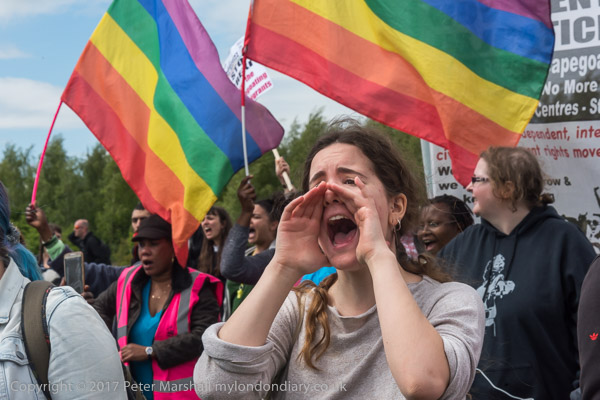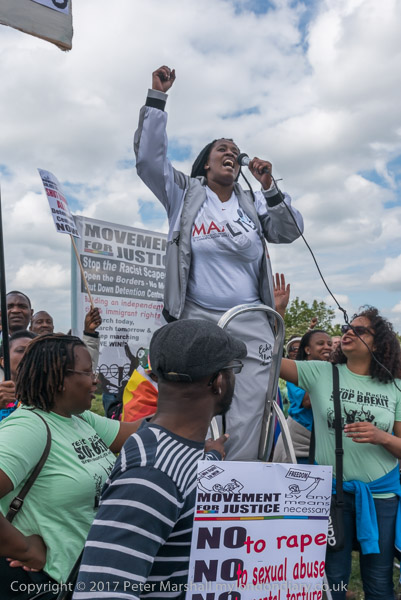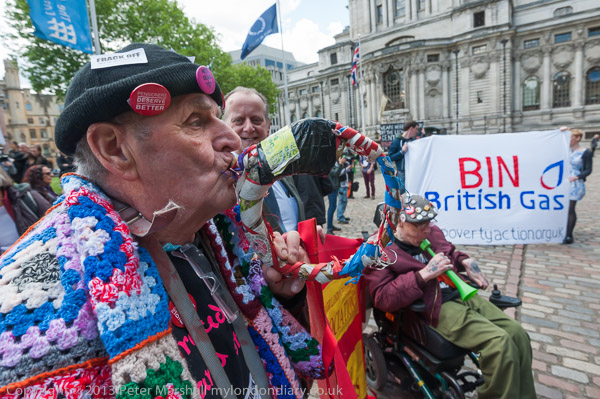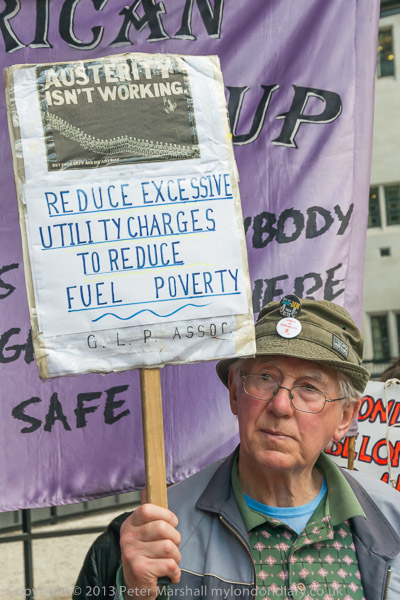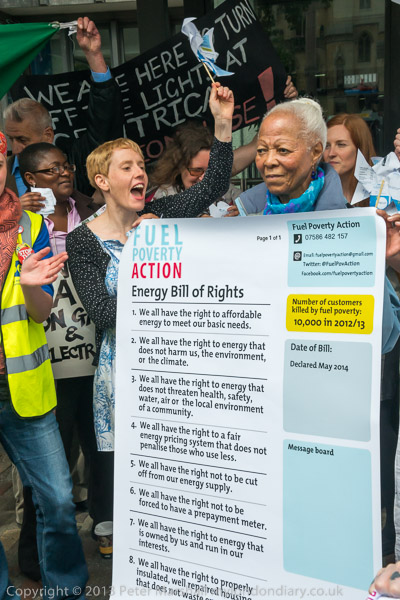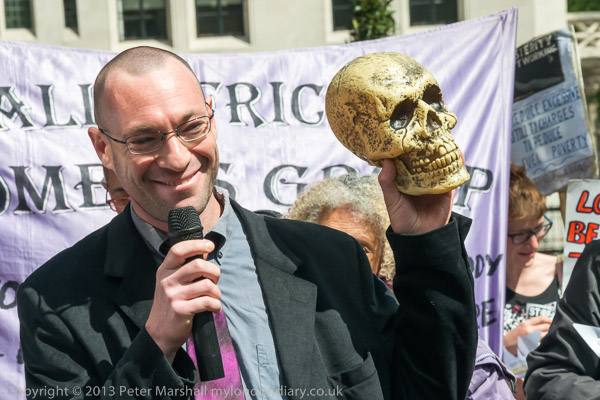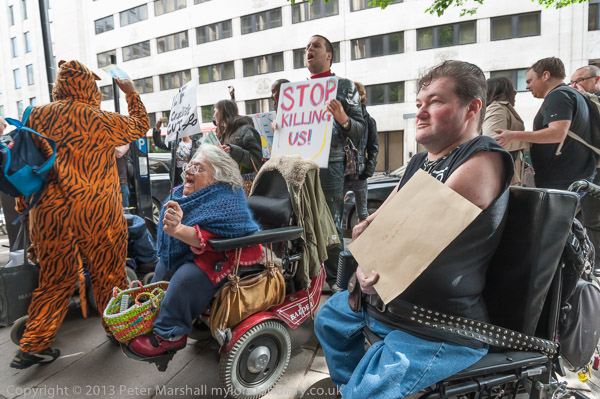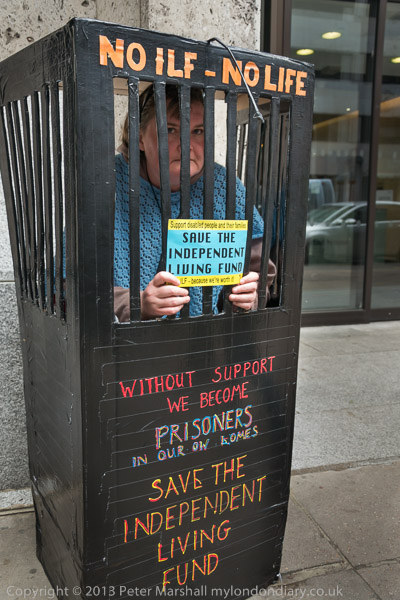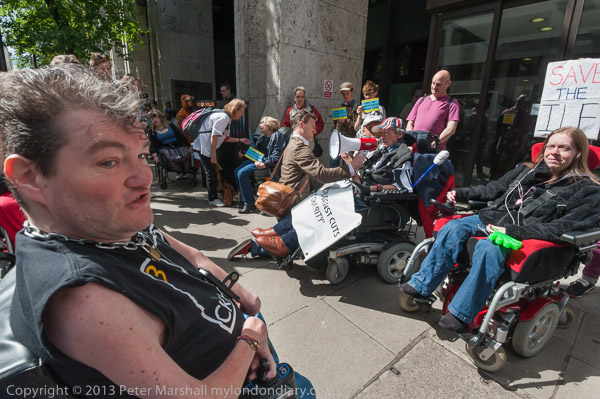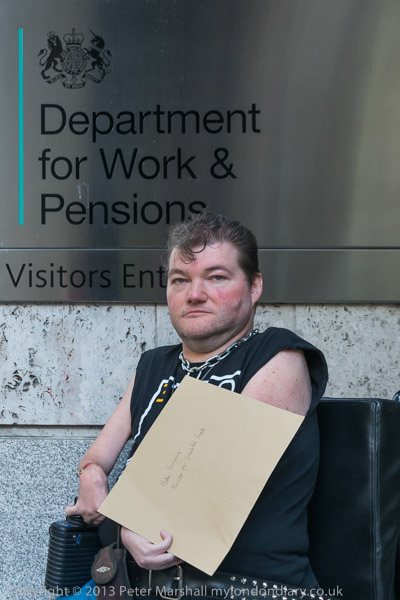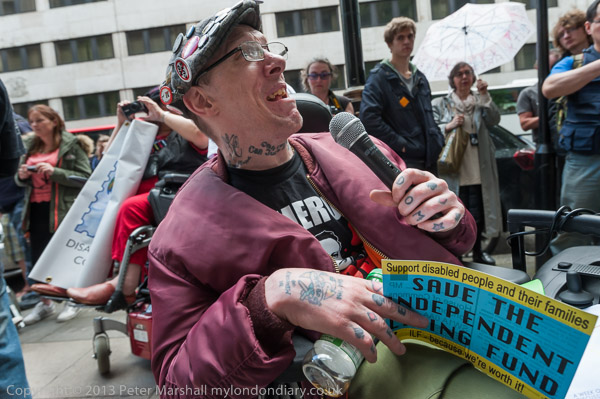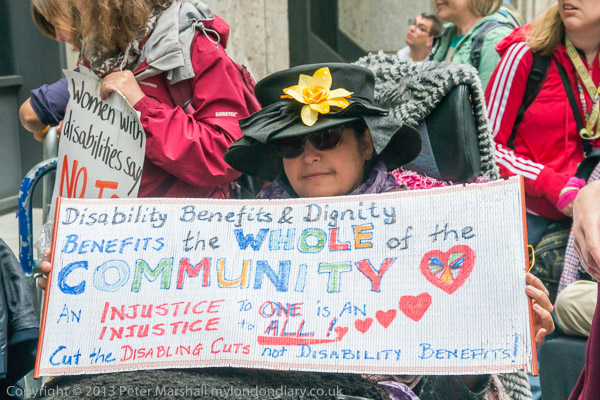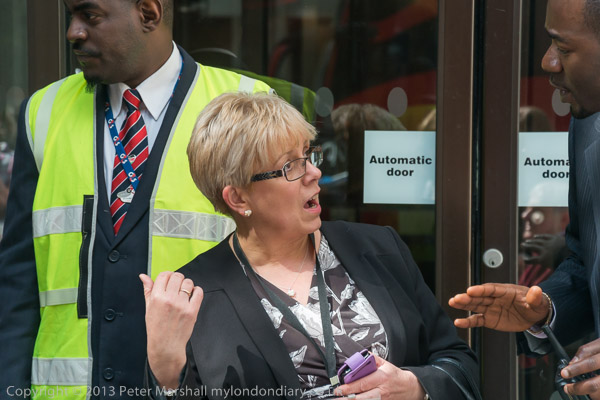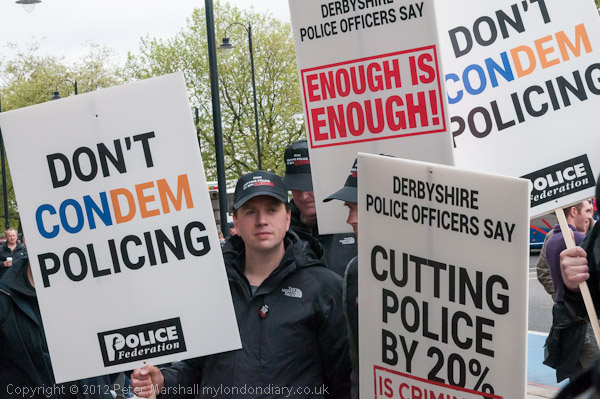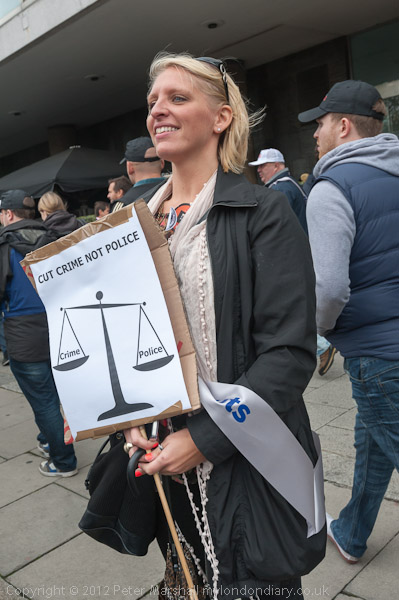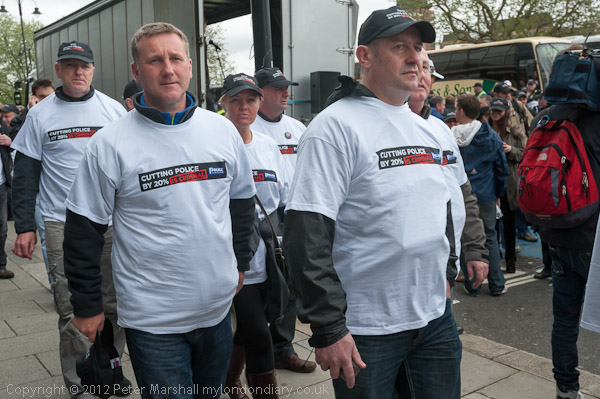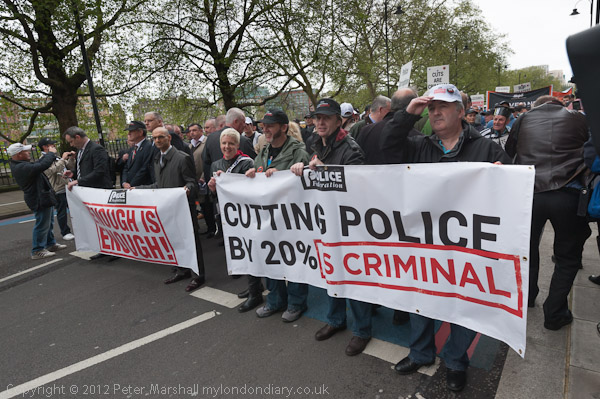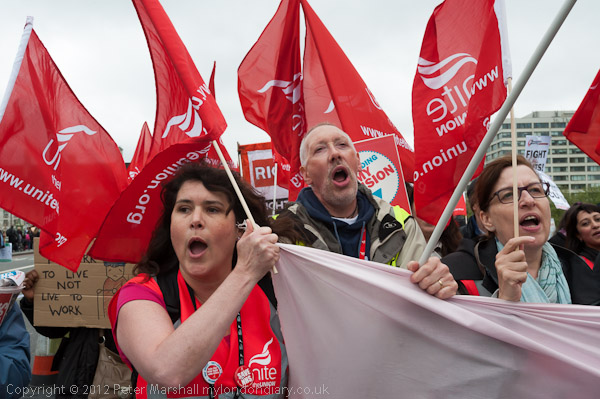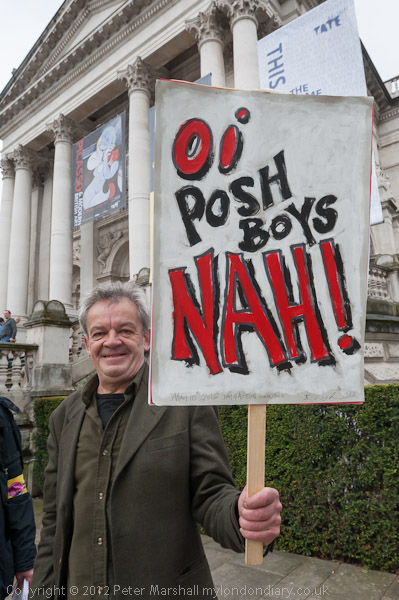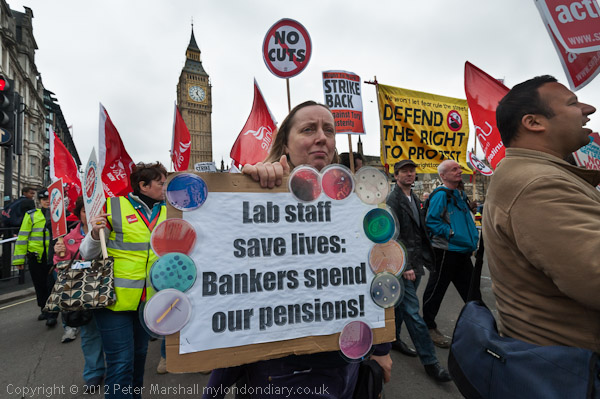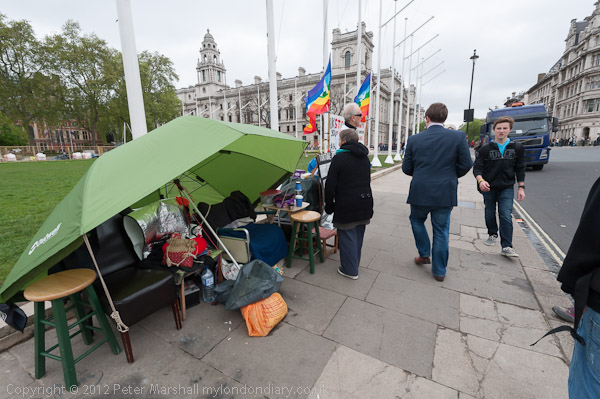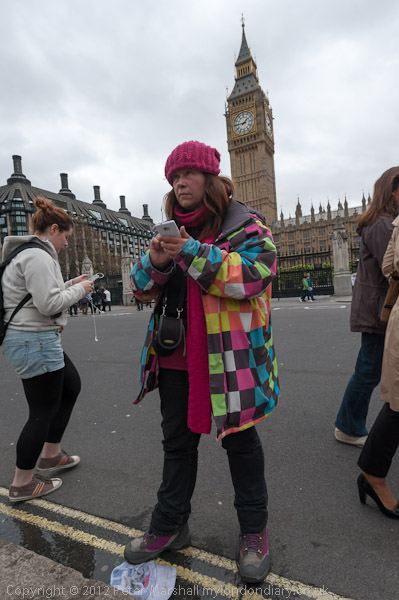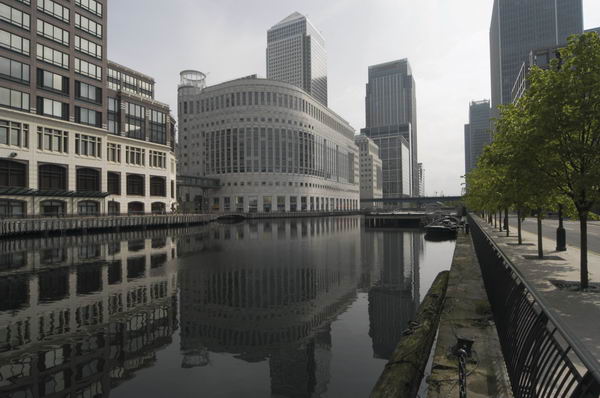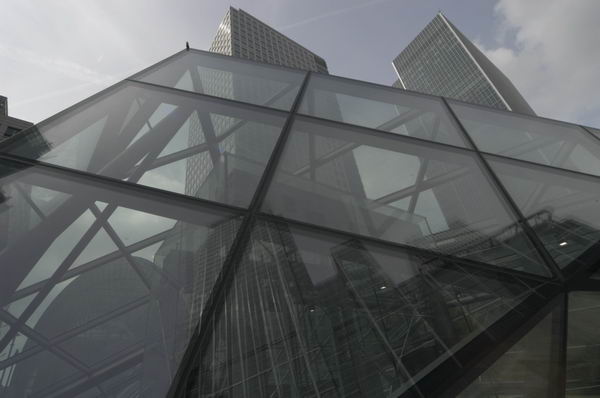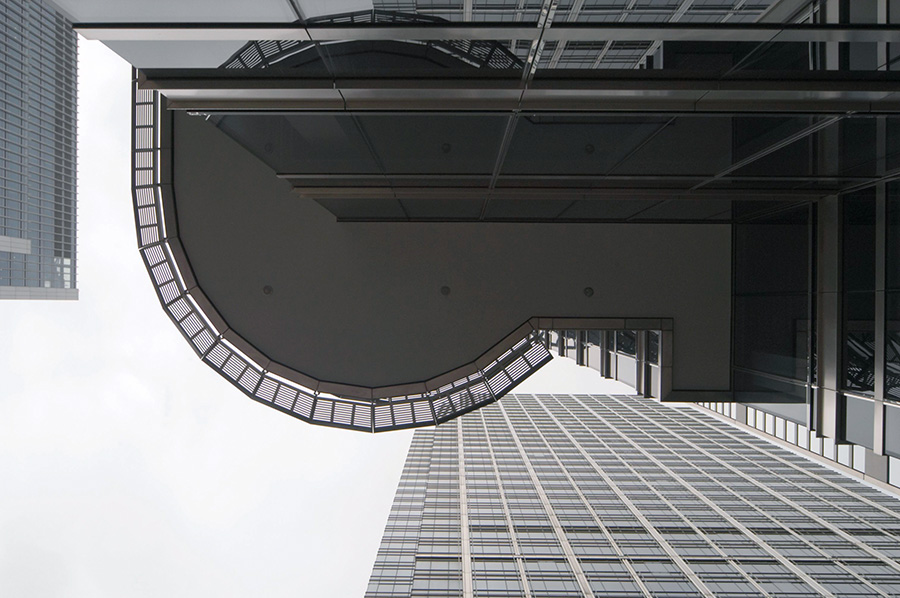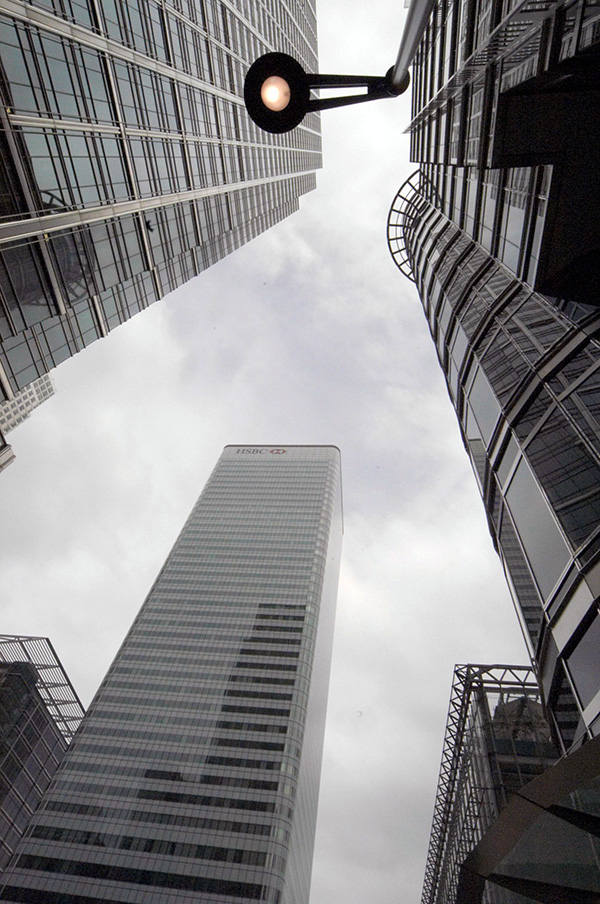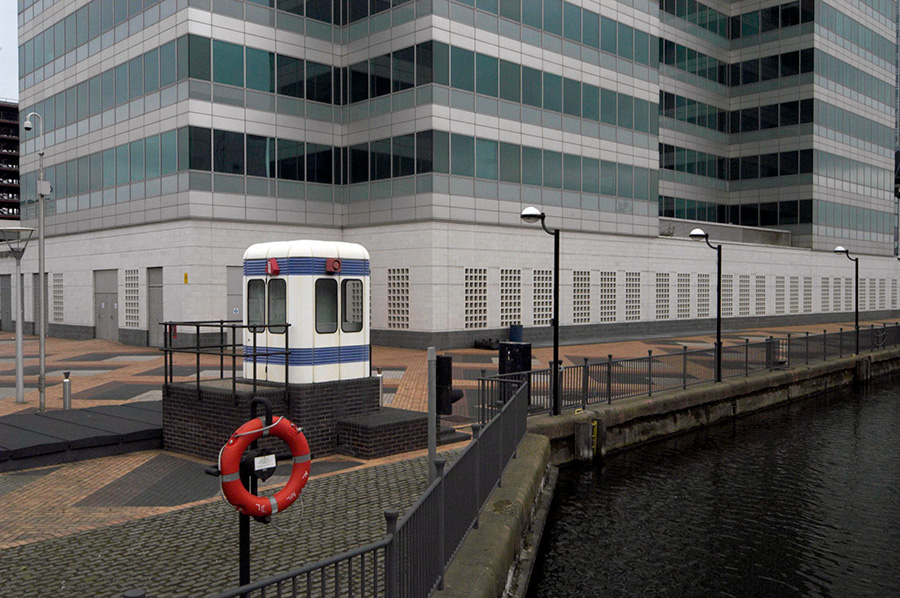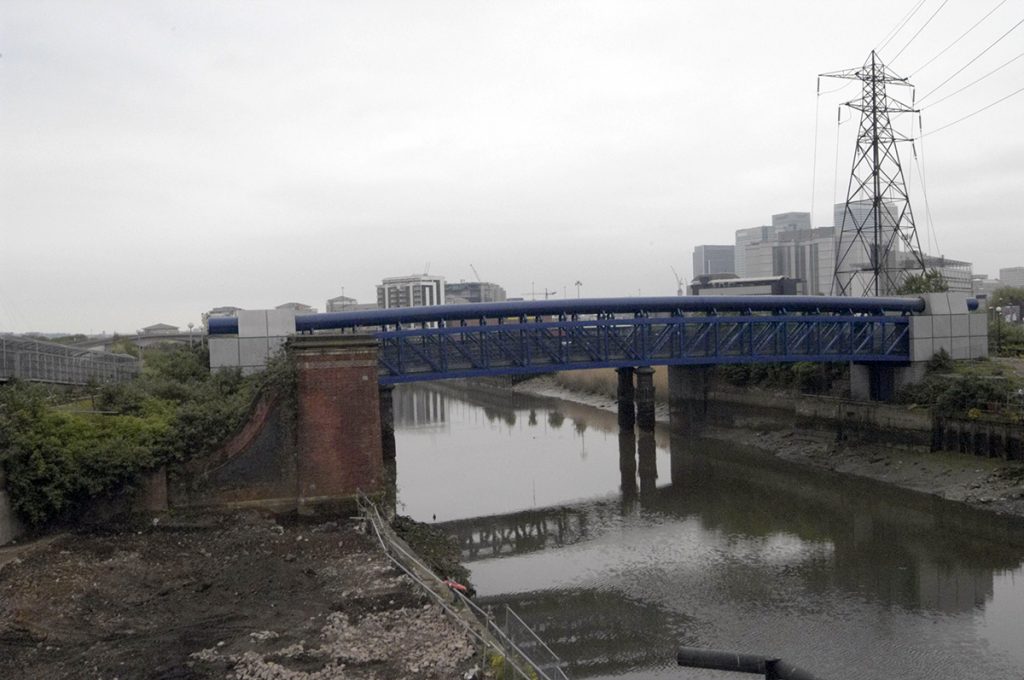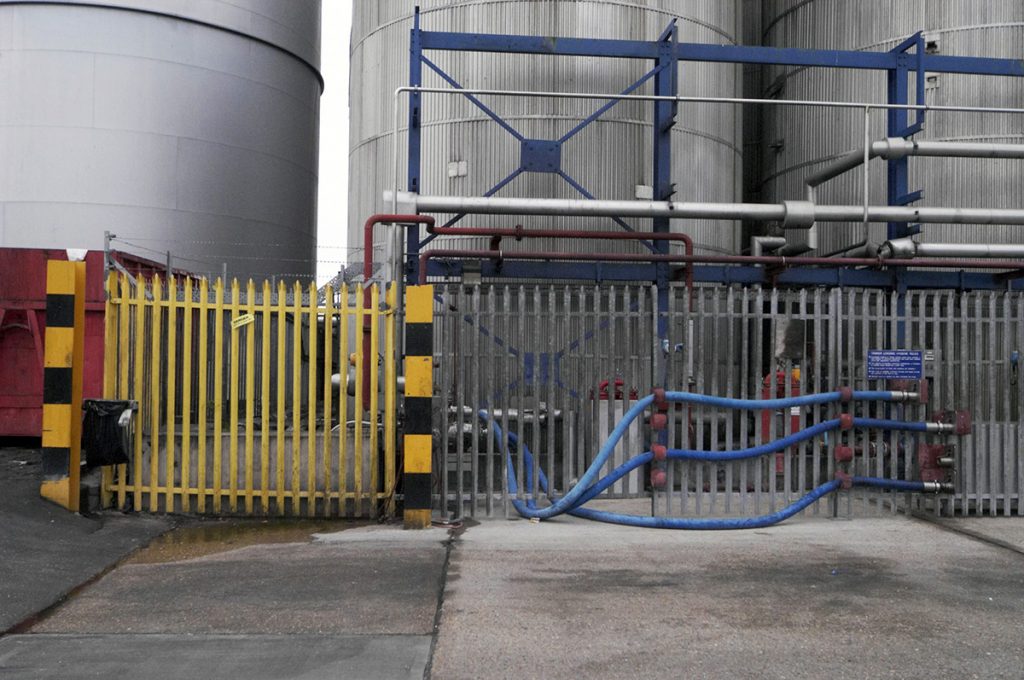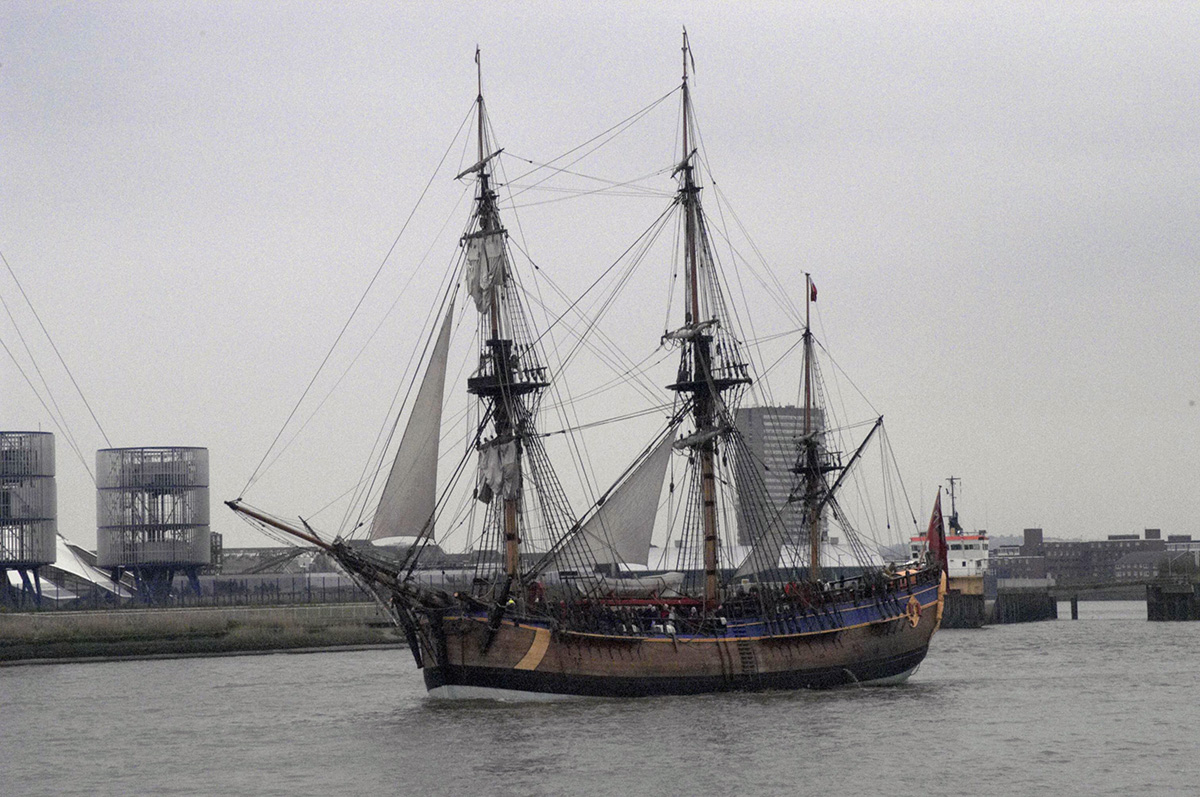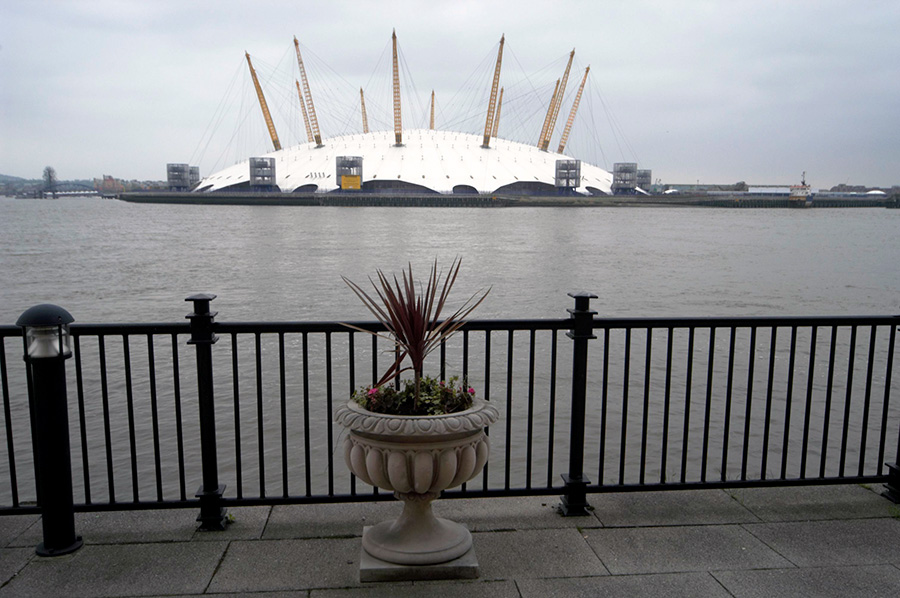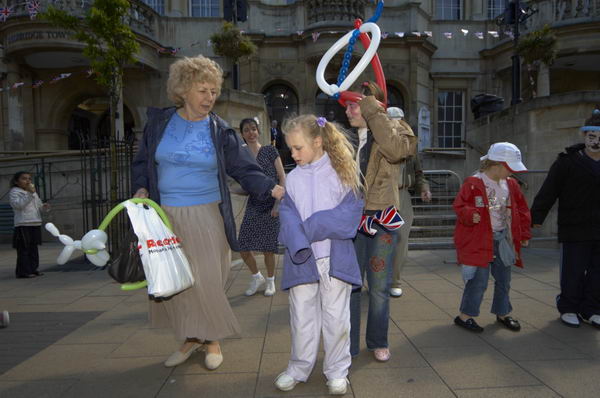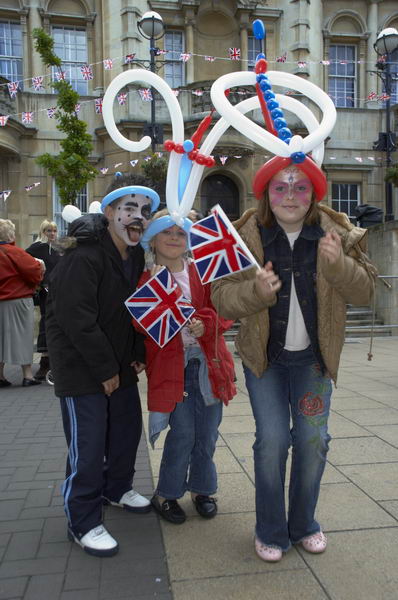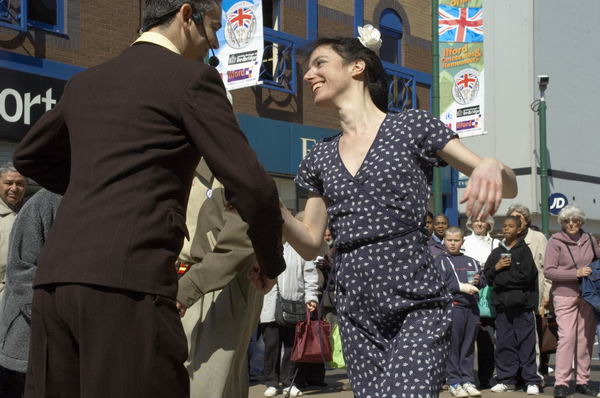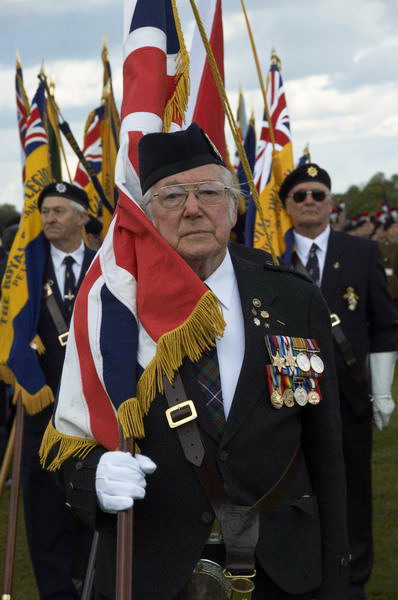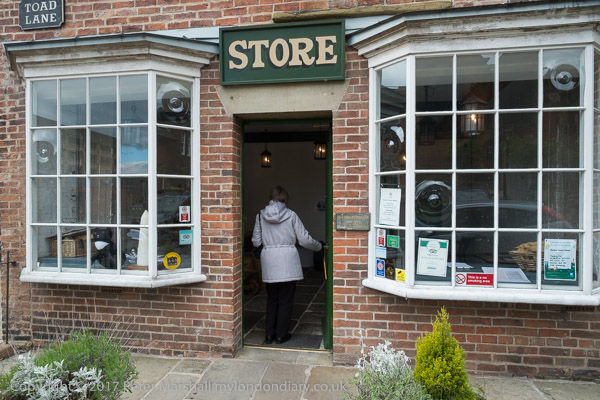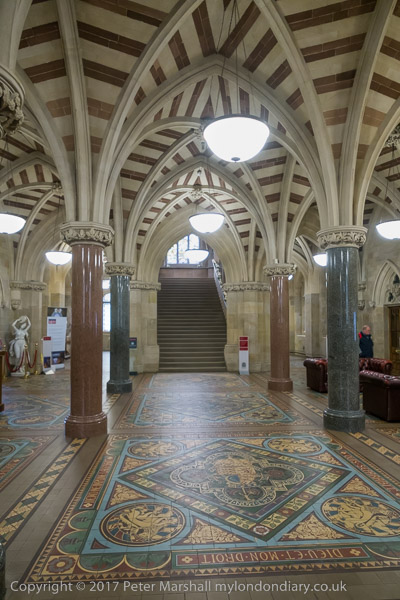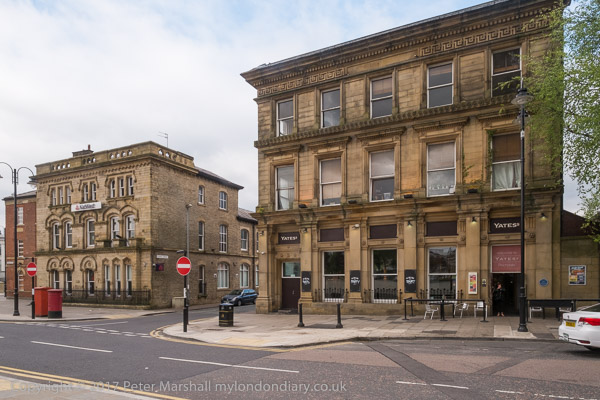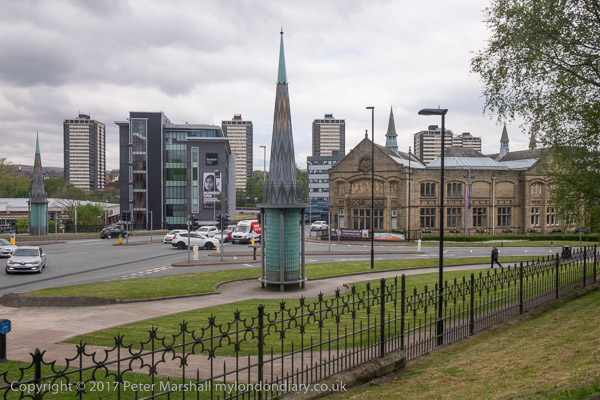Conscientious Objectors, Olympics, Cleaners, Iraq & An Opening – Back in 2008 I had rather more stamina than now and my day on Thursday 15 May 2008 included three protests and a walk around the outskirts of the closed Olympic site, ending with attending an exhibition opening in Brixton.
International Conscientious Objector’s Day – Tavistock Square
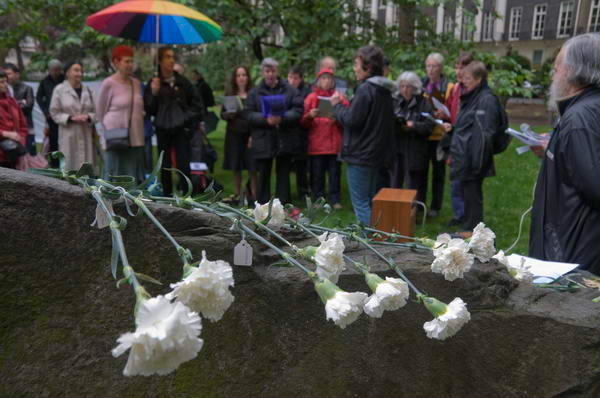
I’ve just checked on a web site which events are marked on 15th May, and although it lists nine, including National Nylon Stocking Day, it fails to mention the most important of all, that this is Nabka Day remembering the Palestinian Catastrophe, the violent ethnic cleansing of Palestinians from their land, belongings and homes following the establishment of Israel in 1948.
Long commemorated by supporters of Palestian rights, the commemoration of the 75th anniversary in 2023 was recognised by a UN General Assembly resolution. Today many are marking this around the world with events in many UK workplaces and Saturday 18th May there is a national march in London for Nabka 76 calling for and ent to the genocide in Gaza and for the UK to stop arming Israel.
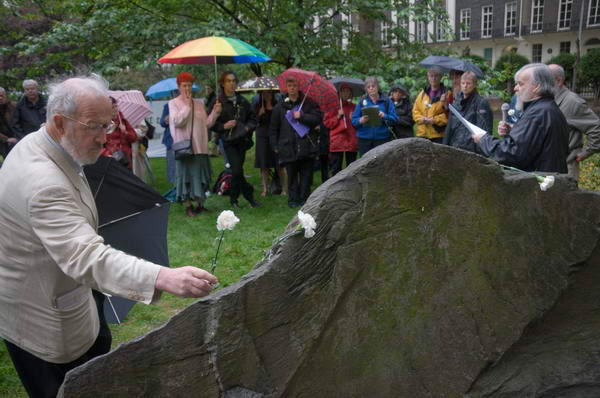
Less well known (and also not mentioned on that web site), May 15th is International Conscientious Objector’s Day, first observed in 1982 as a European day and in 1985 adopted by War Resisters’ International. In London today (15 May 2024) there will be a ceremony in Tavistock Square as there was in 2008, though starting an hour later at 1pm.
In 1987 the United Nations Commission on Human Rights recognised “the right of everyone to have conscientious objection to military service as a legitimate exercise of the right of freedom, thought, and religion“. However in many countries around the world this right is still denied.
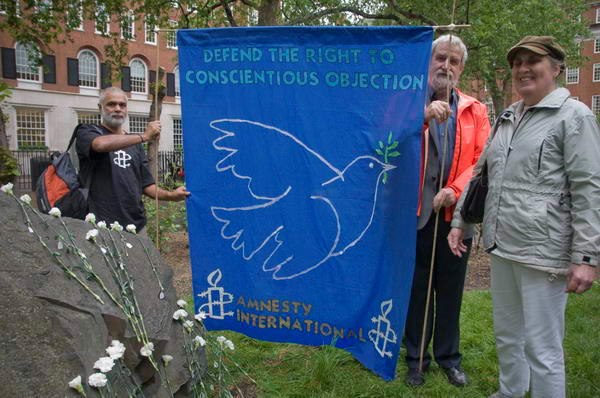
Tavistock Square has a number of memorials including at the centre of the garden a statue of Mahatma Ghandi given to the city of London in 1967 by the Indian High Commissioner, and a cherry tree planted by the then mayor of Camden Millie Miller in 1967 to commemorate the victims of the Hiroshima bombing, as well as a memorial to the holocaust. On the railings of the square is a memorial plaque to those killed in the bus destroyed in the square by the London suicide bombing of 7 July, 2005.
At the north end of the garden, close to the cherry tree, is a large grey rough-hewn boulder of Cumbrian slate was unveiled in 1994 as a memorial to conscientious objectors by composer Sir Michael Tippett, himself a conscientious objector, and people gathered on the grass in front of this.

After speeches and songs Bill Hetherington of the Peace Pledge Union read out the names and gave brief details of individual COs, past and present, from over 80 countries around the world, as a small representation of those who, as the words engraved on the memorial read, “…have established and are maintaining the right to refuse to kill.“

As the names were read, those taking part brought up white carnations – a symbol of the peace movement – and laid them on the stone. Each had on it a label with the country and name of a CO. The inscription on the stone continues: “Their foresight and courage give us hope.”
On My London Diary at International Conscientious Objectors’ Day you can read more about the speakers and the event.
Stratford – Bow: Olympic Site

I had time before the next protest to go to Stratford and make my way around the southern edge of the Olympic site, now surrounded by a tall blue fence.

I went as far as the Lea Navigation where I photographed the notice closing the entrance to the Bow Back River channels which run through the site to navigation.

From the Greenway I could see huge piles of earth which are having to be processed because of their contamination from years of industrial production on the site. The site area was more or less unrecognisable although the City Mill River still flowed through it. It was a dismal day, with light rain or drizzle and everything looked bleak.
More pictures Stratford – Bow: Olympic Site.
Justice for cleaners demonstrate at AON
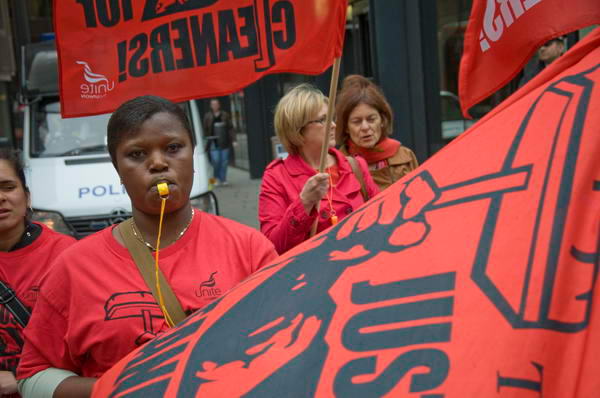
Justice for Cleaners brought together London’s largely migrant cleaners in a campaign for a living wage, sick pay, holidays, trade union rights and respect and was backed by major unions including Unite (and the TGWU which had then recently merged with Amicus to form Unite.)
On May 15th 2008 they had planned a protest outside the RBS offices in Bishopsgate, where cleaners were employed by Pall Mall, but negotiations had led to some success and the demonstration had been switched to AON in Devonshire Square, EC2, a short walk away.

AON, based in Chicago, is one of the world’s leading companies in insurance, with a first quarter net income for 2008 recently announced as $218 million. The cleaners at its City of London offices take home less than it takes to live on in London.
Their offices are on private property where I’d previously been prevented from taking pictures by security officers, and the protest took place in front of the gates on the street.
Noisy public protests such as these are effective because they draw attention to the shameful way these workers are treated even though they work to clean the offices of prestigious companies – which is why the Tories brought in highly restrictive laws in an attempt to stop them.
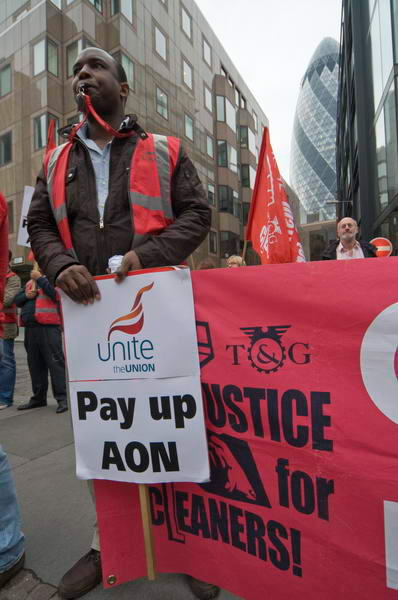
Watching them through the gates were a number of security men as well as City of London police. Workers in Devonshire Square were walking post the protesters and those inside the offices will have been able to hear the protest which took place with a lot of whistle blowing, shouting and a powerful megaphone used to express the cleaners’ demands.
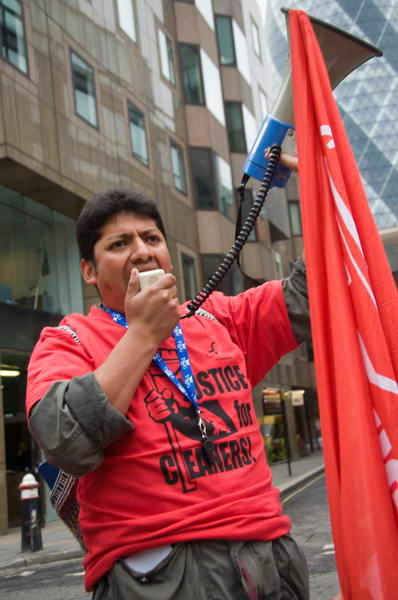
Although Unite were supporting the cleaners here, migrant workers in London soon largely lost confidence in them and other major unions, who they felt were at times making deals with management that were not truly reflecting their interests, particularly in some workplaces where they seemed to be more interested in preserving wage differentials than getting good deals for the poorest workers. The cleaners – and many other low paid workers – are now largely represented by grass roots unions such as United Voices of the World.
Justice for cleaners demonstrate at AON
Iraqi Democrats Against the Occupation – US Embassy
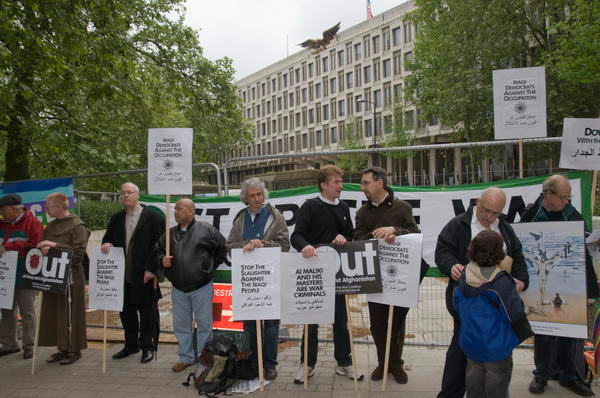
Stop the War Coalition and Iraqi Democrats Against the Occupation protested at the US Embassy in Grosvenor Square calling for an end of actions against the Iraqi people and the withdrawal of US forces.

They handed in a letter condemning the continuing US occupation which had caused an “unimaginable level of death and destruction to the people and country in the past five years” and noting the similarity between US actions and the Israeli repression of Palestinians, with the building of concrete walls to divide Baghdad into what Pentagon sources have described as “30 killing zones“.
Iraqi Democrats Against the Occupation
Photofusion opening – Changing Spaces
On my way home I took a few pictures of Brown Hart Gardens in Mayfair before going to Brixton to view the opening of the ‘Changing Places‘ show.

This picture wasn’t posed – I just walked up to look at the photograph by Simon Rowe and saw the young woman standing there with her head at a very similar angle. You can see a few more picture from the opening on My London Diary.
Flickr – Facebook – My London Diary – Hull Photos – Lea Valley – Paris
London’s Industrial Heritage – London Photos
All photographs on this page are copyright © Peter Marshall.
Contact me to buy prints or licence to reproduce.
